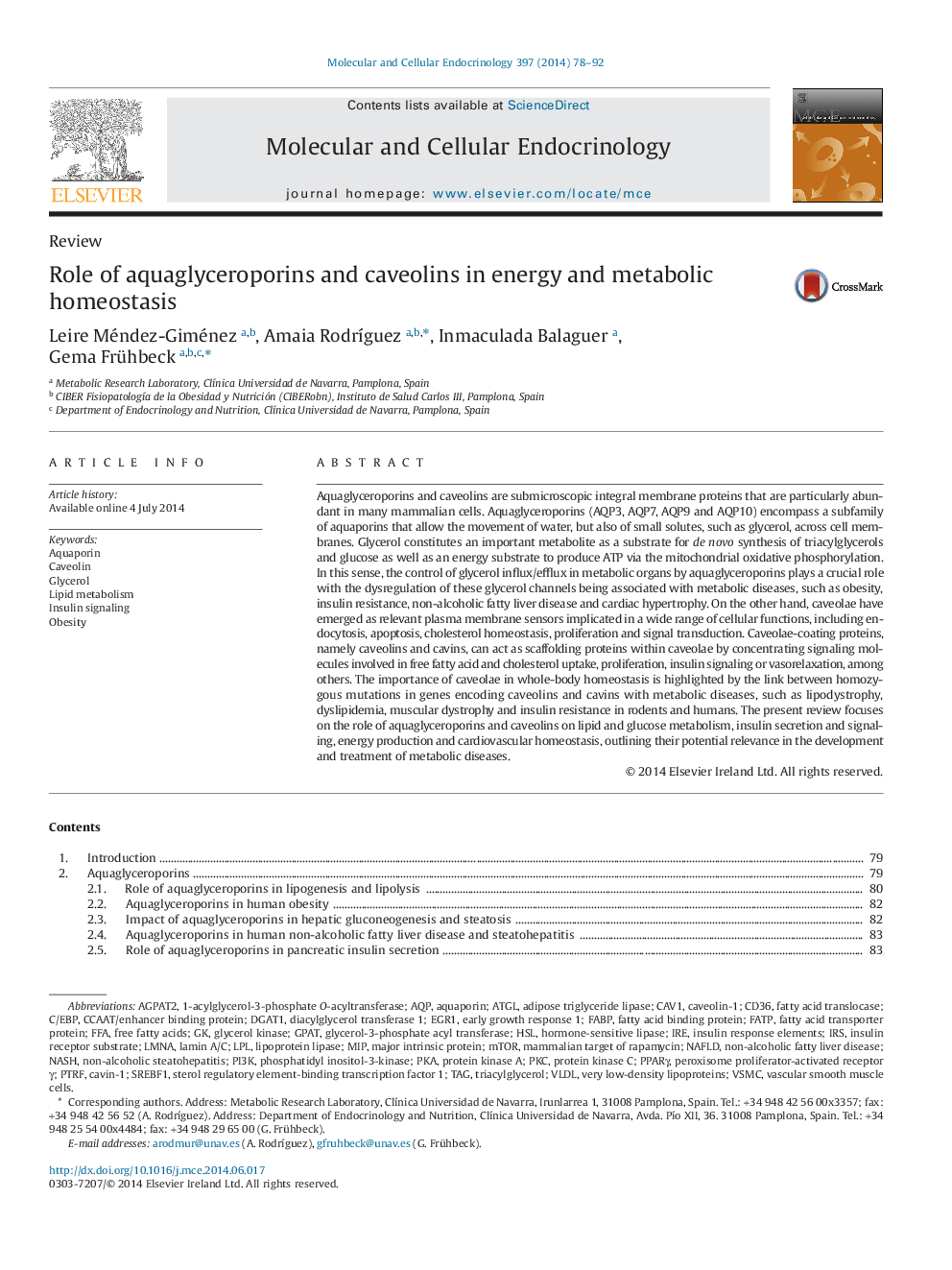| کد مقاله | کد نشریه | سال انتشار | مقاله انگلیسی | نسخه تمام متن |
|---|---|---|---|---|
| 2195995 | 1550881 | 2014 | 15 صفحه PDF | دانلود رایگان |
• Aquaglyceroporins constitute glycerol channels involved in lipogenesis and lipolysis.
• Insulin resistance and NAFLD are associated with a dysregulation of aquaglyceroporins.
• Caveolins and cavins are integral membrane proteins implicated in lipid trafficking.
• Caveolins and cavins constitute novel loci for congenital lipodystrophies.
• Caveolae act as platforms serving for efficient insulin signaling.
Aquaglyceroporins and caveolins are submicroscopic integral membrane proteins that are particularly abundant in many mammalian cells. Aquaglyceroporins (AQP3, AQP7, AQP9 and AQP10) encompass a subfamily of aquaporins that allow the movement of water, but also of small solutes, such as glycerol, across cell membranes. Glycerol constitutes an important metabolite as a substrate for de novo synthesis of triacylglycerols and glucose as well as an energy substrate to produce ATP via the mitochondrial oxidative phosphorylation. In this sense, the control of glycerol influx/efflux in metabolic organs by aquaglyceroporins plays a crucial role with the dysregulation of these glycerol channels being associated with metabolic diseases, such as obesity, insulin resistance, non-alcoholic fatty liver disease and cardiac hypertrophy. On the other hand, caveolae have emerged as relevant plasma membrane sensors implicated in a wide range of cellular functions, including endocytosis, apoptosis, cholesterol homeostasis, proliferation and signal transduction. Caveolae-coating proteins, namely caveolins and cavins, can act as scaffolding proteins within caveolae by concentrating signaling molecules involved in free fatty acid and cholesterol uptake, proliferation, insulin signaling or vasorelaxation, among others. The importance of caveolae in whole-body homeostasis is highlighted by the link between homozygous mutations in genes encoding caveolins and cavins with metabolic diseases, such as lipodystrophy, dyslipidemia, muscular dystrophy and insulin resistance in rodents and humans. The present review focuses on the role of aquaglyceroporins and caveolins on lipid and glucose metabolism, insulin secretion and signaling, energy production and cardiovascular homeostasis, outlining their potential relevance in the development and treatment of metabolic diseases.
Journal: Molecular and Cellular Endocrinology - Volume 397, Issues 1–2, November 2014, Pages 78–92
